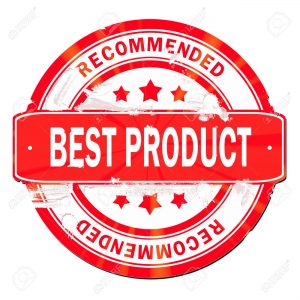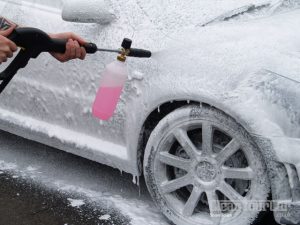What protection really does and mean
Written by: Vinnie van Rooij
“Protection” is an often used term in the field of detailing and valeting. But it is not always clear to everybody what protection really means, and what it does. Protection is a term used to clarify that a product is designed to form a barrier between a surface and contaminants from outside.
Contents
What is protection
The word “protecting” according to the Oxford dictionary means:
Keep safe from harm or injury
This means that the term “protection” refers to a barrier that protects the surface it is applied upon. For example: wax forms a barrier between dirt and the paintwork. Preventing the dirt and grime from coming into contact with the paint. Wax offers protection for paintwork against grime and dirt.
Putting protection in perspective

The term “protection” does not automatically means that it protects against rocks, sticks, scratches, dents and other situations or objects that can negatively affect a surface. To be sure what type of protection a product offers, either read the label or contact the manufacturer. The term “protection” should therefore be used a bit carefully, to prevent people from getting dissapointed when they find a scratch despite using a sealant or wax. Some ceramic coating have a very high hardness, meaning they can withstand mechanical abrasion better then some other forms of protection, but they need more care and attention to be applied properly.
In general terms, no protective product will protect against any form of dirt. But it will protect against that grime and dirt negatively affecting the surface. To put it in real life terms: your vehicle will still get dirty, just like normal. But the dirt will not get stuck in the paintwork and will be much easier to clean off. Because it doesn’t get stuck on the surface, and because it is much easier to wash off, it will much less likely affect the surface underneath.
An example: bird poo contains harsh chemicals that can severely damage the paintwork of a vehicle if left to long. If not removed in time it will cause a surface imperfection that either needs polishing, or even a spotrepair or respray. If the paintwork was protected with a protective product, the bird poo would not get stuck in the paintwork so easily, and washing it off would be much easier. The risk of the bird poo eating away at the paintwork would be much less likely. With a much decreased risk for a repair needed.
Another example would be that certain forms of dirt like mud is much easier to remove. Greatly decreasing the amount of “rubbing” it does on the surface. Therefore decreasing the risk that the removal will result in surface imperfections. Because the mud is easy to remove, it will less likely scratch the surface during removal.
Realistic protection
Different products form different types of protection, knowing what each product does can help to determine what product you are looking for.
Wax
Protects against:
- Grime getting stuck on the surface
- Dirt caking on
- Bird poo getting stuck on the surface
- Iron particles getting stuck in the surface
- Tar spots getting stuck on the paint
Could protect against: (differs per product)
- Chemical liquids attacking the surface
- Acidic rain affecting the surface
- Mud getting stuck on the surface
- Certain forms of road-salt
Does not protect against:
- Objects causing marks when rubbing the surface
- Marks caused by rubbing abrasive particles during washing
- Certain harsh chemicals
- Heavy objects bumping into the surface
- UV damage
Sealant
Protects against:
- Grime getting stuck on the surface
- Dirt caking on
- Bird poo getting stuck on the surface
- Iron particles getting stuck in the surface
- Tar spots getting stuck on the paint
- Mud getting stuck on the surface
- Certain forms of road-salt
Could protect against: (differs per product)
- Chemical liquids attacking the surface
- Acidic rain affecting the surface
- UV damage
Does not protect against:
- Objects causing marks when rubbing the surface
- Marks caused by rubbing abrasive particles during washing
- Certain harsh chemicals
- Heavy objects bumping into the surface
Ceramic coating
Protects against:
- Grime getting stuck on the surface
- Dirt caking on
- Bird poo getting stuck on the surface
- Iron particles getting stuck in the surface
- Tar spots getting stuck on the paint
- Mud getting stuck on the surface
- Certain forms of road-salt
- Certain harsh chemicals
- Chemical liquids attacking the surface
- Acidic rain affecting the surface
- UV damage
Could protect against: (differs per product)
- Marks caused by rubbing abrasive particles during washing
- Certain harsh chemicals
Does not protect against:
- Objects causing marks when rubbing the surface
- Heavy objects bumping into the surface
Plastic protective film
Protects against:
- Grime getting stuck on the surface
- Dirt caking on
- Bird poo getting stuck on the surface
- Iron particles getting stuck in the surface
- Tar spots getting stuck on the paint
- Mud getting stuck on the surface
- Certain forms of road-salt
- Certain harsh chemicals
- Chemical liquids attacking the surface
- Acidic rain affecting the surface
Could protect against: (differs per product)
- Marks caused by rubbing abrasive particles during washing
- Certain harsh chemicals
- UV damage
- Objects causing marks when rubbing the surface
Does not protect against:
- Heavy objects bumping into the surface
Protection and beading/sheeting
One of the many ways of protecting a surface is done by increasing the surface energy of the layer that is being left behind. This causes liquid to have much less grip on the surface. The liquid forms small beads (beading) that each have a higher mass then a flat sheet of water. This higher mass, combined with the increased surface energy allow the liquids to “glide” over the surface with more ease. While the droplets glide over the surface, they often drag dirt and other small particles with them. In a way you could say that the small droplets running off the surface help to clean a little bit. It won’t be enough to completely clean the surface, but the surface will be less dirty then when the droplets formed one big sheet that would dry up.
Different related articles
 It is often asked on detailing fora and social media: "what is the best sealant". Off course there is a difference between certain products and brands, but it is important to know what you are asking. In this guide I will try to explain what the problem is with this question unless it is asked more in-depth....
It is often asked on detailing fora and social media: "what is the best sealant". Off course there is a difference between certain products and brands, but it is important to know what you are asking. In this guide I will try to explain what the problem is with this question unless it is asked more in-depth.... In the world of detailing, their are several special cleaning products. Among them is the tar remover. This is a special cleaning product to remove tar and often also glue residue. Tar can come from roads and sometimes at industrial places, it is used in asphalt roads and can be used at construction sites for roofing and some plumbing jobs. It doesn't cause damage, but shows up as ugly black spots which are notoriously difficult to remove....
In the world of detailing, their are several special cleaning products. Among them is the tar remover. This is a special cleaning product to remove tar and often also glue residue. Tar can come from roads and sometimes at industrial places, it is used in asphalt roads and can be used at construction sites for roofing and some plumbing jobs. It doesn't cause damage, but shows up as ugly black spots which are notoriously difficult to remove.... Overspray is caused by the mist that is created when spray painting a surface. The tiny paint particles are light enough to float around in the air, when they land they slowly start to harden and become overspray. Overspray can be removed safely in many cases....
Overspray is caused by the mist that is created when spray painting a surface. The tiny paint particles are light enough to float around in the air, when they land they slowly start to harden and become overspray. Overspray can be removed safely in many cases.... IPA stands for IsoPropyl Alcohol, and is a chemical compound often used in the world of detailing to remove polish residue. The liquid is colorless with a strong odor. Caution is required for this liquid is very highly flammable!...
IPA stands for IsoPropyl Alcohol, and is a chemical compound often used in the world of detailing to remove polish residue. The liquid is colorless with a strong odor. Caution is required for this liquid is very highly flammable!... Snowfoam is a particular way of pre-cleaning before washing the car with a washmitt or similar. Snowfoam will loosen up dirt and will move a lot of the dirt when it is rinsed off....
Snowfoam is a particular way of pre-cleaning before washing the car with a washmitt or similar. Snowfoam will loosen up dirt and will move a lot of the dirt when it is rinsed off.... Waxaddict is an English brand of detailing products that started out in 1997. The brand started out creating wax for their sister company: Waxybox....
Waxaddict is an English brand of detailing products that started out in 1997. The brand started out creating wax for their sister company: Waxybox....







Links to this article
There are no external links to this article. Yet.